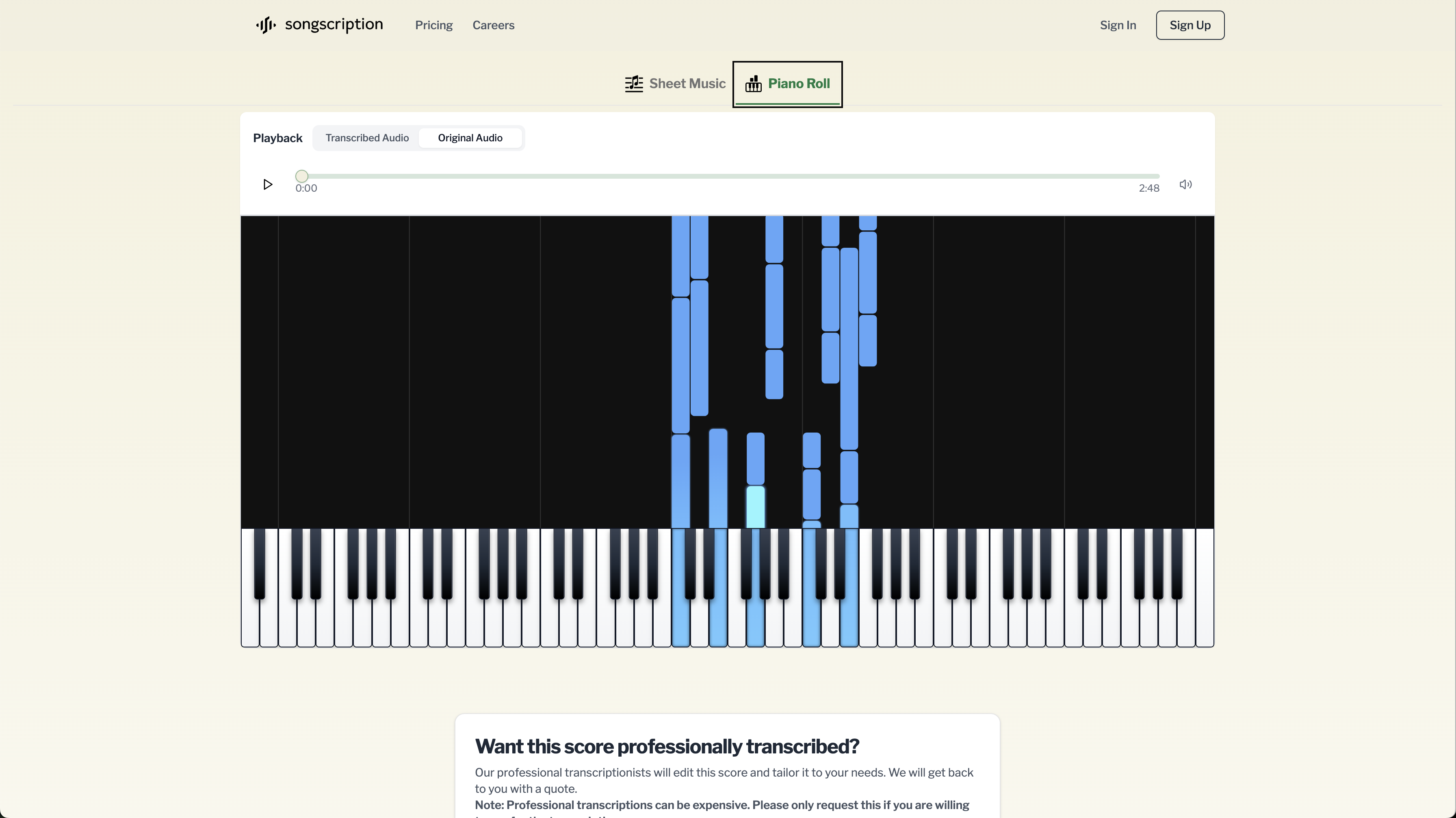“Most musicians can’t easily find notation for the songs they actually want to play – we’re using AI to close that gap”: Songscription is an AI-powered platform that converts any audio file into notation, tabs and MIDI
Songscription wants to make transcription fast, easy and accessible for those without the skills to achieve it

As AI-powered technology continues to develop, it seems that almost every task involved in being a musician or producer is in danger of being automated.
AI tools can write lyrics, suggest chord sequences and melodies, then design synth patches and generate drum samples to flesh out the track. They'll even mix and master the finished product. Hell, if you really want to squeeze every last drop of joy out of the entire affair, platforms like Suno will spit out an entire song fully-formed at the click of a button.
While we'd argue that some of these tasks perhaps don't need to be automated (we'll write our own songs, thank you very much) there's still a huge amount of potential for AI to make musicians' lives easier without sacrificing creativity, handling laborious tasks that might otherwise be too difficult or time-consuming to take on.
That's the ethos behind Songscription, an AI-powered music transcription platform that converts audio recordings into sheet music. Having recently secured a $5 million investment and the backing of Guns N' Roses' Ron "Bumblefoot" Thal, who is serving as an advisor to the company, Songscription is bent on making transcription fast, easy and accessible to those without the skills to achieve it.
Songscription is a browser-based platform that converts audio files, MIDI files or even YouTube links into notation and guitar tabs. The platform currently supports single instrument transcription, and piano, guitar, bass, trumpet, violin and flute are all supported, with more instruments on the way. There's also an experimental mode that converts songs with multiple instruments and vocals into arrangements for piano, though this is currently in its early stages.

Once an audio file is transcribed, Songscription displays the notation in a score viewer. The music can be edited, played back at multiple speeds, or displayed on a piano roll visualizer for those that can't read traditional notation. Once you're happy with the results, you can export the notation in PDF, MIDI, Music XML or GuitarPro formats.
Songscription is aimed at musicians and educators struggling to obtain notation, tabs or chords for songs that they're learning or teaching. “Most musicians can’t easily find notation for the songs they actually want to play, especially as platforms like Spotify have made more niche artists’ music increasingly accessible,” CEO and co-founder Andrew Carlins told Music Business Worldwide.
Want all the hottest music and gear news, reviews, deals, features and more, direct to your inbox? Sign up here.
“We’re using AI to close that gap. Now artists can instantly create notation for their songs, allowing fans to connect in new ways.”
The platform has said that it will use its recently acquired funding to develop support for more instruments and forms of notation, while developing features that enable musicians to create custom arrangements of pieces tailored to their skill level. Though it's currently aimed at players and teachers, Songscription hopes to ultimately serve the needs of institutions that undertake transcription on a large scale, such as university music departments, publishers and media scoring teams.
The legal status of many creative AI tools is up for debate, and Songscription is no exception. The platform has trained its AI models using material in the public domain and through licensing partnerships with individual artists and music companies, and is currently in talks with global music publishers in the hopes of accessing more training data.
Songscription is available on a tiered subscription basis with a free tier that gives you 10 transcriptions per month. The Plus and Pro tiers (£7.99 and £22.99/month, respectively) offer more transcription credits and export options.

I'm MusicRadar's Tech Editor, working across everything from product news and gear-focused features to artist interviews and tech tutorials. I love electronic music and I'm perpetually fascinated by the tools we use to make it.
You must confirm your public display name before commenting
Please logout and then login again, you will then be prompted to enter your display name.